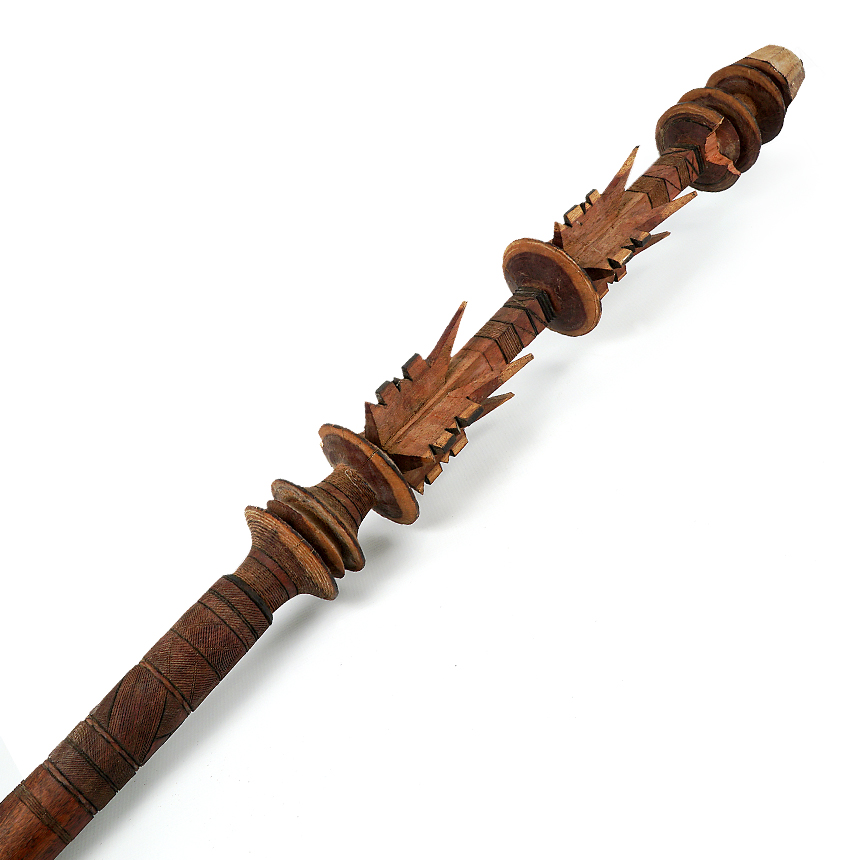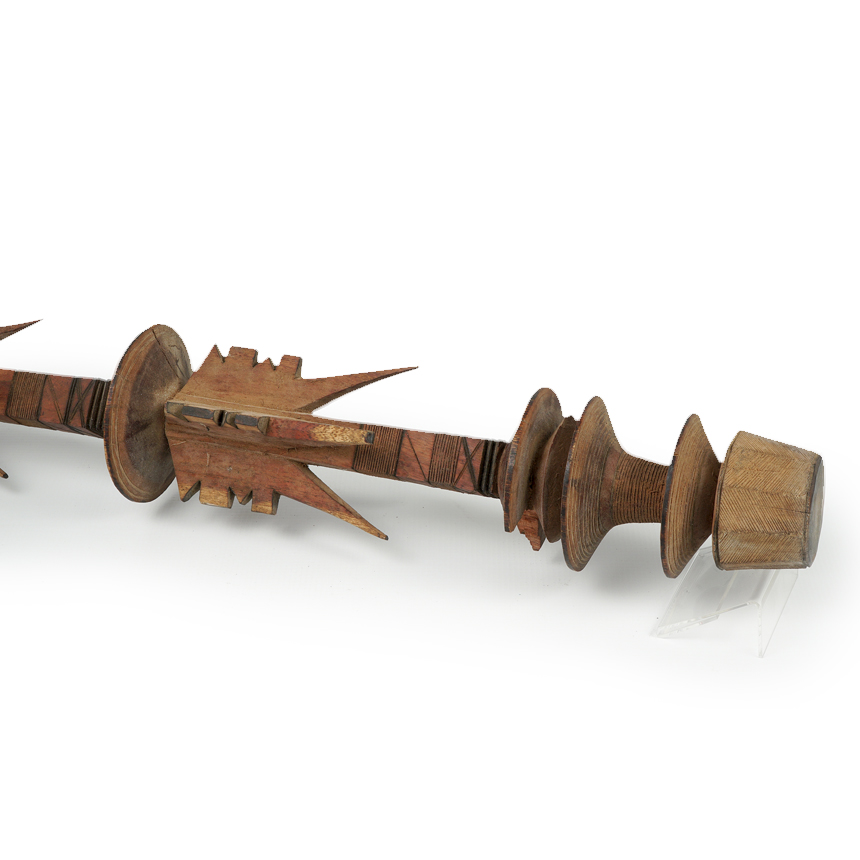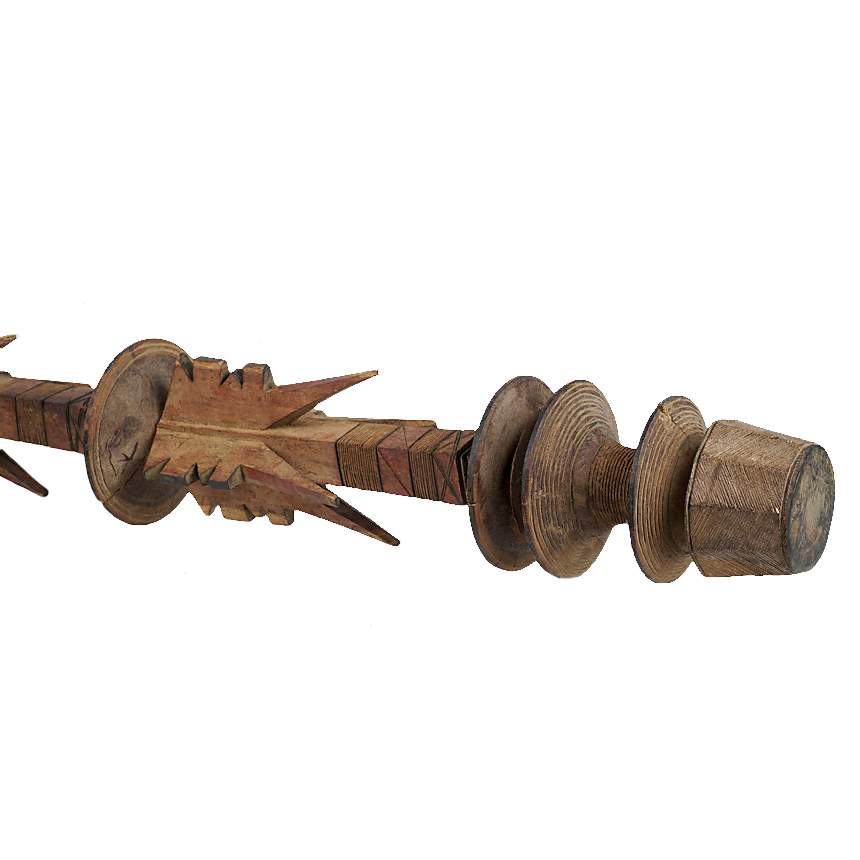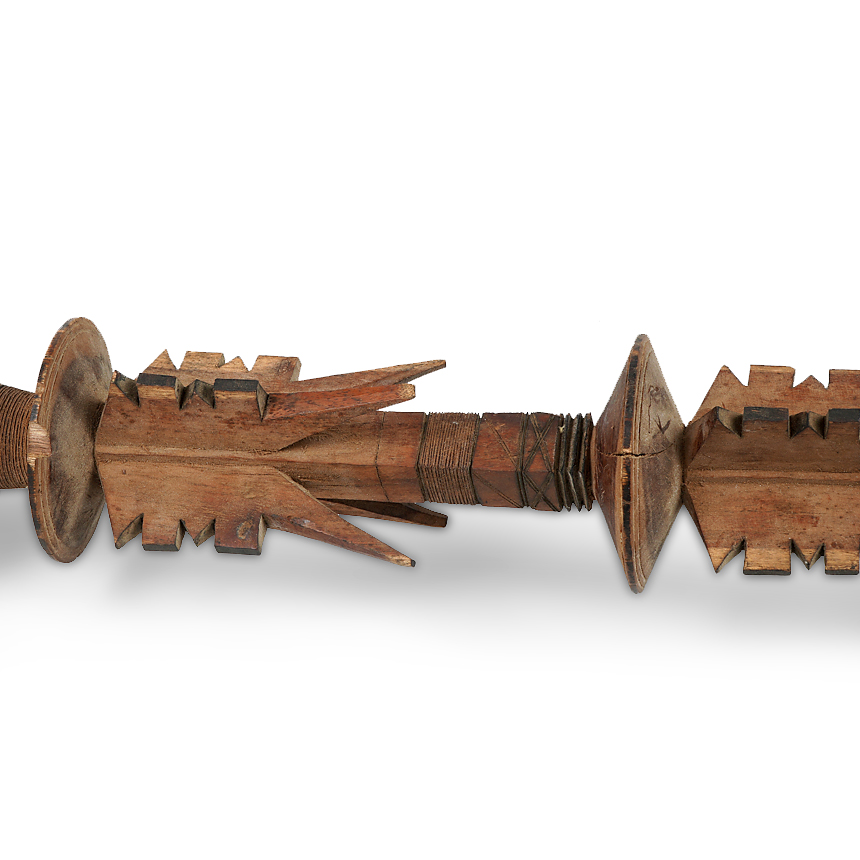Tent post Iguetten – MŻo/A/4053
Origin: Gao (the Republic of Mali)
Dating: the half of the 20th century
Tuaregs, also known as the Desert People, are people of Berber origin who live in the sandy areas of the Sahara mainly in Algeria, Libya, Mali, Niger, Chad, Nigeria, and Burkina Faso. Traditionally, nomads, today Tuaregs lead a sedentary lifestyle more and more often. Nevertheless, still, one of the elements the most frequently associated with them is the tent (ehen) - low, surrounded by mats and composed of pieces of leather or roofing materials, an easy-to-assemble wooden structure.
Tuaregs do not produce masks, sculptures, or paintings, but their extraordinary decorative skills can be seen for example on leather products (like bags, sacks, pillows, or saddles), metal jewelry, or wooden construction elements, such as a tent post - similar as the one you are looking at right now.
A stake called iguetten was placed at the entrance to the tent and served as a support for fastening the ropes supporting its structure. It is made of teak wood known for its extraordinary properties. Thanks to the content of silicic acid and a large amount of natural oily substances, teak wood is resistant to both moisture and chemical and biological factors (e.g. termites or other wood-eating insects). In addition to igem stakes, the structure of the tent is also made up of other types of decorative wooden elements, e.g. tagettiut for hanging luggage on them or amchaghab, which is part of a litter placed on the camel's back and used to carry tent elements during the journey.
The entrance of the Tuarene tent should traditionally be located on the west side. At the tent, you could find, among others querns or millet mortar. Opposite the entrance to the tent, there was usually a water jar, while turning right into the tent, you could see, among others a small hearth, saddlebags hung on the walls of the tent, wooden trunks, and chests or leather pillows. A bed on wooden stakes, covered with sheep and camel skins, often separated the space of the tent for storing food and dishes. Contrary to, for example, Bedouins, the inside of the Tuareg tents are not divided into the female and male zones - the distinction between men and women is made outside the tent; men receive their guests outside the tent, and even outside the settlement, while the space inside the tent is more associated with women who prepare meals there.
Bibiliography:
Esin Hasgül, Space as configuration: patterns of space and culture. ARCHTHEO 2015_ 9th Theory and History of Architecture Conference, 05 - 07 November 2015, Istanbul, Turkey, pp. 9-10.
Tuareg pole ‘Igem’, [w:] www.couleurlocale.eu, link: https://www.couleurlocale.eu/en/tuareg-tent-pole-igem.html [dostęp: 4.01.2022].
Tent post (ehel), [w:] www.dma.org (strona Dallas Museum of Art), link: https://collections.dma.org/artwork/5320406 [dostęp: 4.01.2022].
----------------------------------------------------------------------------
The purchase is co-financed by the Ministry of Culture, National Heritage and Sport as part of the National Institute of Museums and Collections' own program "Expansion of museum collections".



